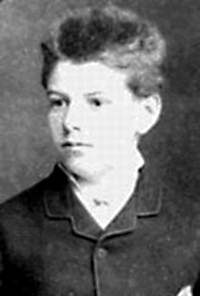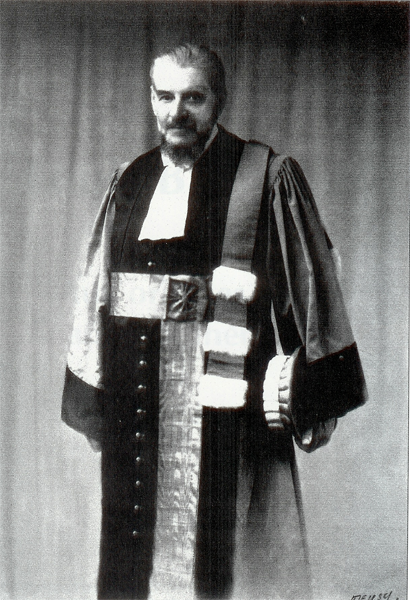<Back to Index>
- Mathematician Louis Jean-Baptiste Alphonse Bachelier, 1870
- Architect Thomas Hastings, 1860
- Jurist Helmuth James Graf von Moltke, 1907


Louis
Jean-Baptiste Alphonse Bachelier (March 11, 1870 – April 28, 1946)
was a French mathematician at the turn of the 20th century.
He is credited with being the first person to model the stochastic
process now called Brownian motion, which was part of his PhD
thesis The Theory of Speculation, (published 1900). His thesis, which discussed the use of Brownian motion to evaluate stock options,
is historically the first paper to use advanced mathematics in the
study of finance. Thus, Bachelier is considered a pioneer in the study
of financial mathematics and stochastic processes.
Bachelier was born in Le Havre. His
father was a wine merchant and amateur scientist, and the vice-consul
of Venezuela at Le Havre. His mother was the daughter of an important
banker (who was also a writer of poetry books).
Both of Louis' parents died just after he completed his high school
diploma ("baccalauréat" in French), forcing him to take care of
his sister and three-year-old brother and to assume the family
business, which effectively put his graduate studies on hold. During
this time Bachelier gained a practical acquaintance with the financial
markets. His studies were further delayed by military service.
Bachelier arrived in Paris in 1892 to study at the Sorbonne, where his
grades were less than ideal.
Historians argue Bachelier's thesis was not appropriately received,
resulting in Academia blackballing. However, his
instructor, Henri Poincaré is
recorded to have given some positive feedback (though socially
insufficient for finding an immediate teaching position in France at
that time). The
thesis received a note of honorable, and was accepted for publication
in the prestigious Annales Scientifiques de l’École Normale Supérieure.
The fact that it did not receive a mark of très honorable, despite its
ultimate importance, is still interpreted as an appreciation for his
contribution. Jean-Michel Courtault et al. point out in "On the
Centenary of Theorie de la Speculation" that honorable was
"the highest note which could be awarded for a thesis that was
essentially outside mathematics and that had a number of arguments far
from being rigorous." Positive feedback from Poincaré can be
attributed to the mathematician's interest in mathematical ideas, not
just rigorous proof. For
several years following the successful defense of his thesis, Bachelier
further developed the theory of diffusion processes, and was published
in prestigious journals. In 1909 he became a "free professor" at
the Sorbonne. In 1914, he published a book, Le Jeu, la Chance, et le
Hasard (Games, Chance, and Risk), that sold over six thousand copies.
With the support of the Council of the University of Paris, Bachelier
was given a permanent professorship at the Sorbonne, but World War
I intervened and Bachelier was drafted into the French army as a
private. After the war, he found a position in Besançon, replacing a
regular professor on leave. When the professor returned in 1922,
Bachelier replaced another professor at Dijon. He moved to Rennes in
1925, but was finally awarded a permanent professorship in 1927 at
Besançon, where he worked for 10 years. Besides
the setback that the war had caused him, Bachelier was blackballed in
1926 when he attempted to receive a permanent position at Dijon. This
was due to a misinterpretation of one of Bachelier's papers by Professor Paul Pierre Lévy,
who—to Bachelier's understandable fury—knew nothing of Bachelier's
work, nor of the candidate that Lévy recommended above him.
Lévy later learned of his error, and reconciled himself with
Bachelier. Also
notable is that Bachelier's work on random
walks predated Einstein's celebrated study of Brownian
motion by five years.